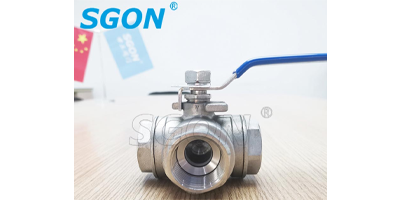Ball valves, as critical components in fluid control systems, must adhere to a comprehensive set of international and domestic industry standards and specifications. These standards ensure the quality, safety, and reliability of ball valves in various applications, from industrial processes to residential plumbing.
I. International Standards
A. API Standards
The American Petroleum Institute (API) has developed several standards relevant to ball valves. API 6D, for example, focuses on pipeline valves. It covers aspects such as design, materials, testing, and inspection requirements for ball valves used in pipeline transportation of petroleum and natural gas. This standard ensures that ball valves can withstand the high pressures and harsh environments associated with the oil and gas industry. The valve body and components must have sufficient strength and corrosion resistance. API 608 is another important standard that pertains to ball valves in general refinery and chemical plant services. It details the dimensional and performance requirements, including pressure-temperature ratings, seat leakage limits, and torque requirements for operation. Compliance with these API standards is crucial for ball valves used in the energy sector, as it guarantees interoperability and safety in complex piping networks.
B. ISO Standards
The International Organization for Standardization (ISO) has also contributed significantly to ball valve standards. ISO 17292 is a standard that addresses the design and testing of ball valves for cryogenic applications. Given the extreme low temperatures involved in handling liquefied gases such as liquefied natural gas (LNG), this standard specifies the materials and construction techniques necessary to prevent embrittlement and ensure proper sealing and operation. ISO 5211 is a widely recognized standard for the mounting dimensions of industrial valves, including ball valves. It allows for the easy integration of ball valves with actuators and other control devices, promoting standardization across different manufacturers and facilitating the assembly and maintenance of valve systems in industrial settings.
II. Domestic Standards
A. GB/T Standards in China
In China, the GB/T standards play a vital role in regulating ball valves. GB/T 21465-2008 is a standard for ball valves used in industrial piping systems. It defines the types, parameters, technical requirements, and test methods for these valves. This standard helps to ensure the quality and performance of ball valves manufactured and used in China's industrial infrastructure. It covers aspects such as valve body construction, sealing performance, and flow characteristics. GB/T 12237-2007 focuses on the general technical conditions of ball valves. It includes requirements for materials, dimensions, marking, and packaging, providing a comprehensive framework for the production and quality control of ball valves in the domestic market.
B. ASME Standards in the United States
The American Society of Mechanical Engineers (ASME) has a series of standards applicable to ball valves. ASME B16.34 is a key standard that specifies the pressure-temperature ratings, dimensions, and materials for valves, including ball valves. It is widely used in the United States and has a significant impact on the global valve industry. This standard ensures that ball valves can safely handle the specified pressures and temperatures in various applications. ASME Boiler and Pressure Vessel Code also has implications for ball valves used in systems related to boilers and pressure vessels. It sets strict requirements for the design, fabrication, and inspection of valves to ensure the integrity and safety of these high-pressure and high-temperature systems.
III. Key Requirements and Implications
A. Material Requirements
Industry standards often prescribe specific materials for different parts of the ball valve depending on the application. For example, in corrosive environments, valves may be required to use stainless steel or other corrosion-resistant alloys. In high-temperature applications, materials with appropriate heat resistance must be used. These material requirements ensure the durability and reliability of the ball valve under specific operating conditions. Failure to use the correct materials can lead to premature failure, such as corrosion-induced leaks or material degradation at high temperatures, which can have serious consequences in industrial processes and pose safety risks.
B. Performance and Testing Requirements
Standards define performance criteria such as seat leakage rates, pressure ratings, and flow coefficients. Ball valves must undergo rigorous testing to demonstrate compliance with these requirements. Pressure testing is carried out to ensure that the valve can withstand the rated pressure without leakage or failure. Seat leakage testing determines the tightness of the valve's sealing surfaces. Flow coefficient testing measures the valve's ability to control the flow of fluid. Compliance with these performance and testing requirements is essential for the proper functioning of ball valves in fluid control systems. A valve that fails to meet the leakage or flow requirements can disrupt the entire process, leading to inefficiencies, product contamination, or even safety hazards.
C. Marking and Documentation
Standards also mandate proper marking and documentation of ball valves. This includes information such as the valve's type, size, pressure rating, material, and manufacturer's name. Clear and accurate marking allows for easy identification and traceability of the valve. Documentation such as test reports and certificates of compliance provides evidence of the valve's adherence to standards. This is crucial for quality control, maintenance, and regulatory compliance. In case of any issues or recalls, the marking and documentation enable quick identification and resolution of problems.
In conclusion, understanding and adhering to international and domestic industry standards and specifications for ball valves is of utmost importance. It ensures the quality, safety, and reliable operation of ball valves in a wide range of applications, protecting both industrial processes and end-users. Manufacturers, installers, and users of ball valves must be well-versed in these standards to make informed decisions and maintain compliance throughout the valve's life cycle.

GET A QUOTE